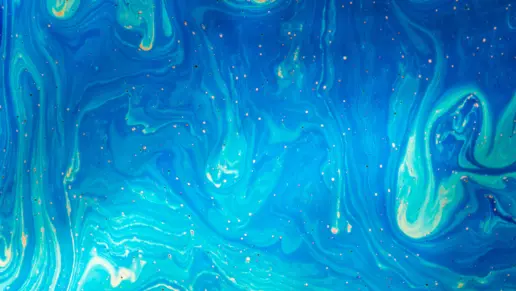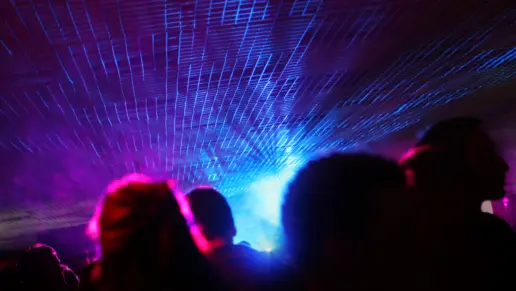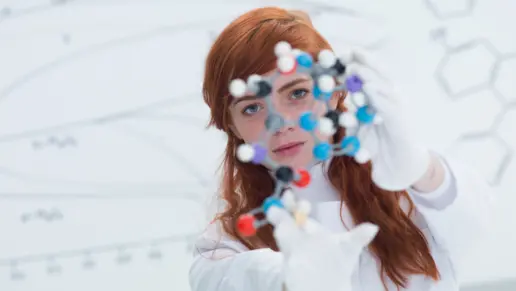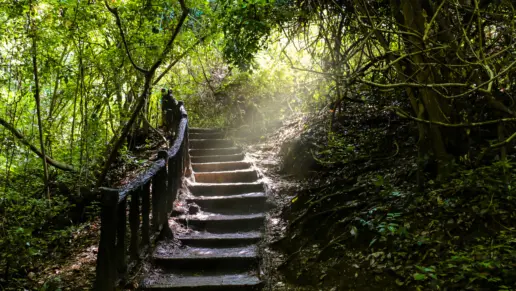Salvia divinorum is an herb in the mint family (Lamiaceae) that individuals consume for its hallucinogenic effects. The plant grows more than three feet high and has large green leaves. It grows in humid tropical climates, but is native to Oaxaca, Mexico.
Salvia’s active ingredient is salvinorin A (SA). This is a psychoactive substance that can alter users’ perceptions of reality so that they have visions, thought patterns, and emotional states, sometimes leading to calmness and sometimes to agitation.
Understanding Salvia Divinorum
The Substance Abuse and Mental Health Services Administration (SAMHSA) estimates that 8.8 million Americans use hallucinogens like salvia. The National Institute on Drug Abuse (NIDA) estimates that 0.8% of high schoolers in the United States use salvia.
Hallucinogens are classified as the following:
- Psychedelics such as LSD affect users’ serotonin processes and potentially cause vivid visions and sensations. They also disrupt a person’s sense of self.
- Dissociatives like ketamine influence glutamate processes that may cause someone to experience feelings of disconnect from their surroundings. Dissociatives also alter individuals’ perceptions.
Salvia is unique in that its effects on the brain are broad and can have psychedelic and dissociative effects.
Traditional Uses of the Salvia Plant
The Mazatec community in Oaxaca were the first consumers of salvia divinorum. Early reports indicated the plant, which they dubbed “hierba de Maria” due to the belief that the Virgin Mary exerted her powers through the plant, was prepared similarly to tea and as a juice. It was consumed for religious purposes and for its medicinal properties.
These traditional ceremonies were a way for communities to seek wisdom for making decisions or healing from various diseases. Participants prepared for each event by fasting. Mazatec shamans then guided the ceremonies, which lasted up to five hours.
Throughout the ceremony, salvia consumption consisted of either chewing and swallowing the plant leaves or drinking a mixture of water with crushed leaves.
Oaxaca communities also used salvia for its medicinal properties. Participants sought to alleviate weakness, anemia, pain, headaches, and stomach problems.
What Else is Salvia Known As
Street names for salvia divinorum include Maria Pastora, Sally-D, Salvia, Mystic Sage, Diviner’s Sage, Magic Mint and Ska Maria Pastora.
Methods of Consumption
Individuals smoke, chew, and vaporize salvia. Raw or dried leaves are ingested and also brewed as tea.
Some users place salvia under the tongue. Others vaporize dried or fresh leaves by themselves or infuse them with salvinorin A to generate more intense experiences.
The expansion of S. divinorum worldwide has also increased the ways it’s consumed. Since its legal status varies among regions, people can purchase salvia tinctures of different potencies and use them in different ways, as noted above.
Concentrated extracts are also available, and their elevated potencies along with a lack of regulations concerning how salvia is manufactured can lead to more side effects and powerful psychoactive experiences.
Effects and Risks of Salvia
Common Side Effects of Salvia Drug Use
Salvia drug effects vary from person to person, are difficult to predict, and depend on individual characteristics and the doses consumed. Here are some of them.
Physical side effects can include nausea, abdominal pain, vomiting, and dizziness. A person may start trembling or experience headaches, changes in their heart rate or blood pressure, or be excessively tired.
Psychological and behavioral changes can also take place. Users may experience panic attacks and anxiety, along with paranoia and confusion. They may experience episodes of fear or terror or temporarily lose memory or speech abilities. Users may also fall prone to hallucinogen persisting perception disorder (HPPD) is a rare condition of recurrent flashbacks that lasts weeks or even years.
The combined physical and psychological effects may lead to accidents, dangerous behaviors, and injuries due to a loss of control.
NIDA has reported that 11% of individuals who consume hallucinogens experience erratic behavior and a loss of self-control that puts themselves or others at risk.
Combining salvia with alcohol or prescription medicine like antidepressants can increase the danger of side effects. The combination of drugs with salvia can dangerously impact your serotonin levels.
How Does Salvia Affect Mental Health?
Salvinorin A is a very strong hallucinogen found in nature. It influences human opioid receptors in the brain that are responsible for integrating sensory perception, movement, and vision. It also impacts serotonin and dopamine activity.
These are neurotransmitters that regulate mental health functions, like mood, motivation, executive control and thinking processes. This impact can generate mental health symptoms like panic attacks, anxiety, and agitation.
There are reports of individuals who consume salvia and then develop acute manic episodes, such as delusions and hallucinations. These sensory effects can resemble psychotic-like symptoms that can lead to self-harm and placing others at risk should an episode occur.
Some hallucinogens are under study for their potential mental health benefits. The FDA has approved the hallucinogenic esketamine (Spravato) to treat severe depression in patients who don’t respond to other medications.
Salvia divinorum is currently not approved for medical purposes. However, it should be noted that researchers investigating the potential medical uses of hallucinogens like salvia tend to exclude individuals diagnosed with certain psychiatric conditions because they may be more vulnerable to developing mental health symptoms with their use.
Short-Term vs Long-Term Salvia Effects
The short term effects of taking salvia can include changes to the body. The body temperature may rise or drop, and individuals may experience tingling or electric sensations. They may also feel tired or heavy in the head. Larger doses may lead to sedation.
Individuals might feel psychologically overwhelmed. They lose touch with reality and start experiencing synesthesia. This is a perceptual phenomenon where sensory stimuli overlap, like seeing shapes while listening to music. Other visual and auditory hallucinations can take place. Some users report out-of-body experiences.
Research on the long-term effects of salvia, including its addictive potential, is sparse. It’s hypothesized that due to the unpredictable and intense nature of its effects, individuals don’t consume salvia regularly.
This lack of research may lead to an underestimation of salvia’s addictive properties. Though it is not a scheduled substance, nor is it labeled as a drug of concern by the US federal government, salvia is illegal in some states. Its addictive potential is classified as unknown and there are no FDA-approved treatments for salvia addiction.
However, some observable long-term effects include mental confusion, social withdrawal, and persistent psychosis. A user may have temporary memory loss and anxiety.
What is a Salvia Trip Experience Like?
What is a salvia high like? Salvia trip experiences vary widely. This is because they depend on the dose consumed, a person’s unique personality, background, and biological characteristics.
Users have reported some common features when high. Here are some common trip experiences.
Many users have experienced vivid visions of animals and other beings found in nature. This includes themselves in the form of out-of-body experiences. They may see themselves revisiting childhood places or contact strange entities.
They also perceive bright lights, vivid shapes, and colors alongside a sense of movement, like floating across space and time.
Other senses include a keen sense of hearing and serenity. They may feel like becoming one with nature or existing in a dream-like state. However, others experience a range of emotions from euphoria to terror and paranoia.
A range of behavior is also experienced, from uncontrollable laughter to slurred speech and difficulty moving. Others walk without being aware of their surroundings while others have memory loss or impaired judgment.
Does Salvia Show Up on Drug Tests?
Routine drug testing generally does not detect salvia divinorum. This is because its psychoactive compound, salvinorin A, requires specialized types of testing to detect its presence.
Some states list salvia as an illegal substance and some organizations like the U.S. Air Force may screen for salvia on their drug tests.
FAQs
How Long Do Salvia Effects Last?
Salvia’s effects depend on how people consume it. When a person chews or drinks an infusion of salvia leaves, effects begin within ten minutes and can last for 45-60 minutes. Some reports note that effects can last several hours after large doses, but these are rare. Chewing and drinking salvia leaves tend to create milder effects when compared to smoking.
Smoking salvia or infusing its leaves produces faster and more intense effects. Just seconds after inhaling, an individual can experience psychedelic or dissociative states. This peaks for 2-20 minutes, with residual effects lingering for up to another hour.
Is Salvia Legal in Different States?
Salvia is illegal in over 20 states in the U.S. Many more have passed or are working on changing its legal status to restrict its purchase.
The DEA has not classified salvia as a controlled substance in the United States. However, the DEA considers salvia a drug of concern due to its hallucinogenic properties and abuse potential. Salvia has no medical-approved use in the United States.
What Treatment Options are Available?
There’s no approved treatment for salvia addiction. However, salvia is hallucinogenic, so modalities like detox, inpatient, outpatient, and aftercare can help users recover from hallucinogen use disorders. These programs consist of clinical expertise, compassionate staff, and specialized facilities to help address salvia abuse.
How is Salvia Detected in Testing?
Salvia remains detectable for 12 hours in blood, 45 minutes in saliva, up to 72 hours in urine, and up to 90 days in hair with chronic use. Many tests utilize advanced lab techniques like gas, liquid, and high-performance liquid chromatography, mass spectrometry, and atmospheric pressure chemical ionization to detect salvinorin A.
A newer method is DART-HRMS. This method is capable of rapid screening raw plant material and commercial extracts and can detect salvia.
What are the Safety Concerns with Salvia Use?
There are many concerns regarding salvia use. In part, these concerns are due its unregulated nature, which can make the risk of overconsumption high. In addition, teens can purchase salvia easily in some states.
Its abuse potential is unknown and its long-term effects on the central nervous system are unclear. This is especially true for teens, and salvia’s impact on developing minds and bodies warrant additional studies.
These intense effects on users’ perception and cognition can result in accidents, criminal acts, or self-harm incidents. In addition, salvia may produce tolerance and require higher doses to produce a psychoactive effect. This can open a door to dependency.
Addressing Salvia Use: Prevention, Support and Salvia Recovery Process
Salvia Treatment Options from Detox to Aftercare
Salvia treatment may begin with managing acute effects in a calm, supervised environment. Formal detox is rarely needed. For problematic use, inpatient programs provide a structured setting for therapy, addressing potential psychological dependence.
Outpatient options offer flexibility to allow folks to maintain daily routines while accessing support groups and counseling to manage triggers and develop coping mechanisms. When treatment ends, aftercare is a valuable resource for ongoing peer support and relapse prevention strategies.
Risk Reduction for Salvia Use
Salvia use carries risks. There are currently no medically-validated benefits. The potency of the extracts and leaves is unclear, and the risk of consuming dangerous quantities is high.
Preventing Relapse with Salvia
The best way to prevent relapse with salvia is to join a recovery program that offers structured guidance to develop coping skills, manage cravings, and address mental health challenges.
Managing Long-Term Salvia Recovery
Long-term recovery requires relying on peer support for accountability, learning coping skills, and accessing professional mental health support.
Salvia Treatment Approaches
The addictive properties of salvia are not clear. Nevertheless, salvia is hallucinogenic and many facilities have years of experience treating hallucinogen abuse disorders.
These programs feature different behavioral therapies, like cognitive behavioral therapy (CBT), group and individual counseling, and a network of peers and coaches committed to living a clean life.
Getting Help
Finding Salvia Treatment Centers
If you’re experiencing salvia dependency and are ready to get help, you have options. Rehab.com is an online directory and resource center that helps you compare programs and find the treatment center best suited to your needs.
First Steps to Recovery from Salvia Use
The first step to recovery from salvia use is acknowledging you may have a dependency. There’s nothing to feel ashamed about. It’s brave to seek help. Compassionate professionals are ready to guide you in your recovery journey.
Additional Recovery Resources and Support
If you experience side effects after consuming salvia then you can call the Poison Help hotline (1.800.222.1222) or 911 for immediate assistance.
SAMHSA provides a National Helpline available 24 hours a day at 1.800.662.HELP for substance abuse and mental health support.
You can also ask your pharmacist or doctor for guidance in accessing local services to recover from problematic salvia use.
Salvia divinorum plant carries significant risks when consumed. Its hallucinogenic properties, unregulated nature, illegality in many states, mental health risks, and unknown long-term effects can make it an unwise choice for anyone who cares about their wellbeing. If you need help with salvia misuse, help is available and the best day to start is today.
Featured Facilities Near You
Finding facilities near you…





